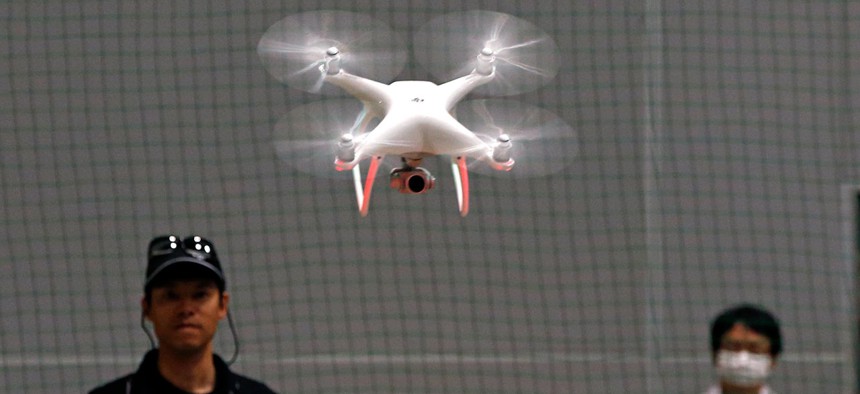The U.S. Air Force Is Giving Its Anti-Drone Efforts a Silicon Valley Twist
A new kind of investor-innovation partnership may help speed emerging technology to the front lines.
Weaponized off-the-shelf drones are a growing problem for U.S. troops, in part because commercial tech moves faster than the Pentagon programs that aim to counter it. So four U.S. Air Force captains took a novel approach to the problem.
Working under AFWERX, the Air Force’s new tech innovation program,they partnered with tech accelerator Techstars to find start-ups and early-stage companies whose tech might help stop drones. But instead of turning these companies into standard defense contractors, they are aiming to help them mature into businesses that thrive on commercial sales as well.
Techstars is what’s known as a technology accelerator, an investor that takes under his or her wing a cohort of early-stage businesses that already have viable products or technologies. Working against a fixed (if arbitrary and self-imposed) deadline, the accelerator provides mentorship, financing, education, and sometimes logistical or office support to get the companies to the next growth stage.
Techstars announced the Air Force partnership in September and, in February, announced 10 companies [powerpoint download] that had made it through the Boston-based program. Among their products are sensors to detect harmful material that rogue drones might be carrying (and do so in a form factor small and efficient enough to work in an urban environment). Another tracks counterfeit drone parts online, while yet another builds rapidly modifiable hunter drones.
“Our mandate was, broadly, counter-UAS technologies,” said Techstars founder Warren Katz. “The results are commensurately extremely broad. We wound up being surprised, which is what we were intending.”
The most innovative aspect of the program is the way it conceives of a new way for the military to engage with technology development, following in the footsteps of the CIA’s In-Q-Tel and other outfits that operate like venture capital funds. The accelerator program focused on dual-purpose technologies of use both to government and the private sector.
The hope was to help these companies mature into business that can sell into the military via regular contracting arrangements, as opposed to Broad Agency Announcements or Small Business Innovation Research programs, that are more bureaucratic and take more time. The goal was also to on the military for their survival.
“The Air Force, their No. 1 concern was that the companies be commercially viable outside of the DOD,” said Katz. “The DOD could purchase a product from them that would be useful to the DOD but did not want welfare cases. The criteria was: is this company capable of surviving in the non-military market without any further support?”
Most importantly, if the arrangement proves a useful model for the military, it will provide a way to buy into technology trends just as they begin taking off, but without taking on too much risk.
“These four young captains in the Air Force took a look at the way things were being acquired and they said, ‘This can not stand. We’re being leapfrogged by ISIS and Al Qaeda that can buy start-of-the-art technology from Amazon, have it shipped to them with overnight shipping,’” said Katz.
Two can play at that game.




